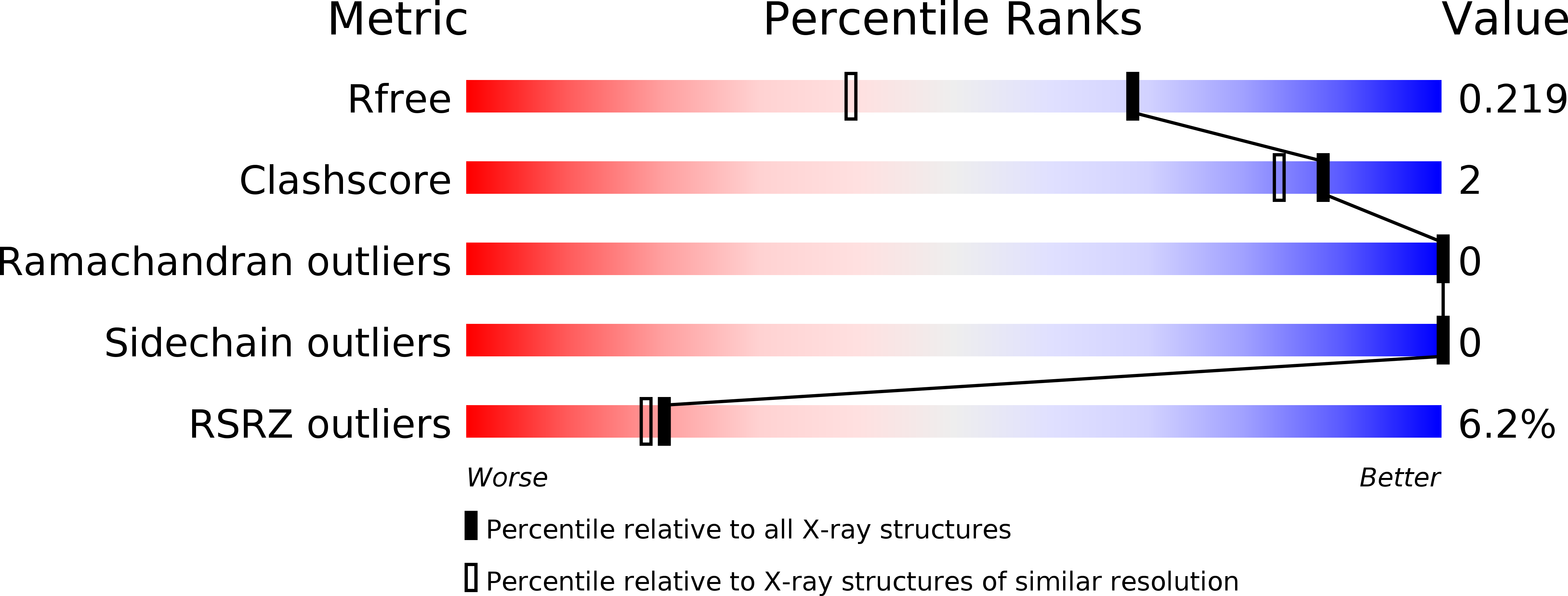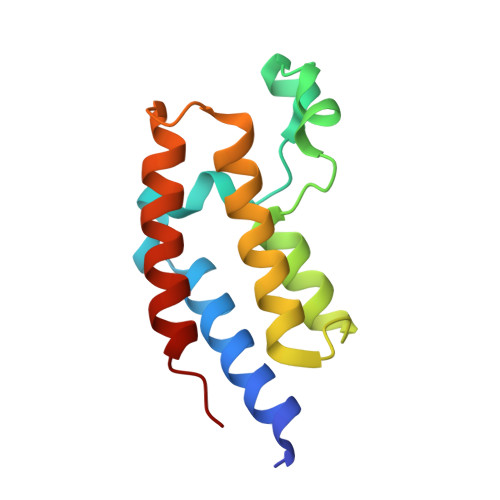Discovery of Tetrahydroquinoxalines as Bromodomain and Extra-Terminal Domain (BET) Inhibitors with Selectivity for the Second Bromodomain.
Law, R.P., Atkinson, S.J., Bamborough, P., Chung, C.W., Demont, E.H., Gordon, L.J., Lindon, M., Prinjha, R.K., Watson, A.J.B., Hirst, D.J.(2018) J Med Chem 61: 4317-4334
- PubMed: 29656650
- DOI: https://doi.org/10.1021/acs.jmedchem.7b01666
- Primary Citation of Related Structures:
6FFE, 6FFF, 6FFG - PubMed Abstract:
The bromodomain and extra-terminal domain (BET) family of proteins bind acetylated lysine residues on histone proteins. The four BET bromodomains-BRD2, BRD3, BRD4, and BRDT-each contain two bromodomain modules. BET bromodomain inhibition is a potential therapy for various cancers and immunoinflammatory diseases, but few reported inhibitors show selectivity within the BET family. Inhibitors with selectivity for the first or second bromodomain are desired to aid investigation of the biological function of these domains. Focused library screening identified a series of tetrahydroquinoxalines with selectivity for the second bromodomains of the BET family (BD2). Structure-guided optimization of the template improved potency, selectivity, and physicochemical properties, culminating in potent BET inhibitors with BD2 selectivity.
Organizational Affiliation:
WestCHEM, Department of Pure and Applied Chemistry , University of Strathclyde, Thomas Graham Building , 295 Cathedral Street , Glasgow , G1 1XL , U.K.


















